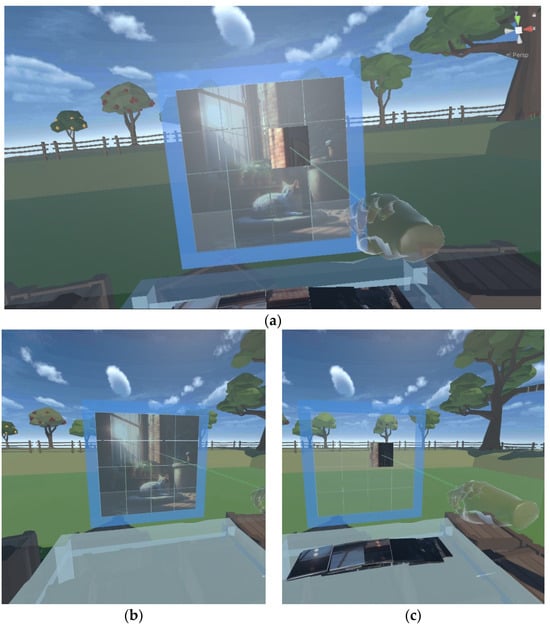Abstract
: In the process of treating pediatric strabismus, great difficulties arise with maintaining attention and a high level of motivation in patients. Existing computer programs and medical equipment should be supplemented with more modern tools and approaches based on virtual reality (VR) technologies, ensuring the full immersion of children in the treatment process. The aim of this study is to develop and evaluate the effectiveness of a virtual reality medical simulator for the treatment of pediatric strabismus. The specifics of the realization of ophthalmic exercises for the virtual simulator and the methods for evaluation of the quality of their performance are considered. In the course of experimental research, a control group of 58 people using the VR simulator and a reference group of 59 people receiving the standard process of strabismus treatment were compared. The average value of visual acuity in the control group increased from 66.1% to 80.4% (p = 0.002); the average value of objective strabismus angle decreased from 5° to 0° (p < 0.001). The subjective strabismus angle was also found to improve from 3° to 0° (p < 0.001). In terms of exercise quality metrics, a selected subgroup of participants who have been training for a long time have shown positive dynamics in terms of improved accuracy and a reduction in their average number of errors. In summary, virtual reality technologies demonstrated a statistically significant improvement in the metrics used to evaluate orthoptic treatment in the control group and the superiority of this approach over standard treatment.



Context for the masses…
”Strabismus (crossed eyes) is a common eye condition among children. It is when the eyes are not lined up properly and they point in different directions (misaligned). One eye may look straight ahead while the other eye turns in, out, up, or down."